Carnivorous plants are some of the most fascinating species in the plant world, using unique adaptations to trap and digest insects and other small prey. Unfortunately, many of these incredible plants are now rare and endangered due to habitat loss, climate change, and human activities. This article highlights some of the most unique and lesser-known carnivorous plants, exploring why they are endangered and what makes them so remarkable.
Attenborough’s Pitcher Plant (Nepenthes attenboroughii)
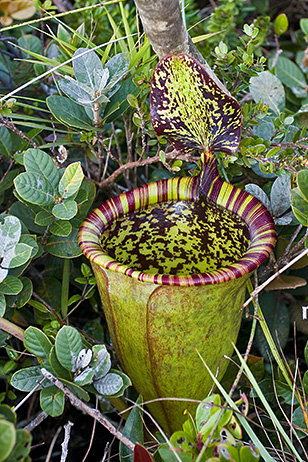
Attenborough’s Pitcher Plant is an enormous carnivorous plant discovered in the Philippines. This rare species grows on the slopes of Mount Victoria and Mount Sagpaw, in remote and harsh environments that are difficult to access. Its large, jug-shaped pitchers are capable of trapping small mammals, such as rodents, and insects, which drown in the digestive fluid inside the plant. The plant is critically endangered due to habitat destruction and climate change, which limit its already restricted range. Its size and unique feeding method make it a fascinating example of nature’s adaptations to poor nutrient soils. It has also been named after the famous naturalist Sir David Attenborough. While it may capture small animals, its primary diet consists of insects and other arthropods. Conservation efforts are underway, but the inaccessibility of its habitat makes research challenging.
Albany Pitcher Plant (Cephalotus follicularis)
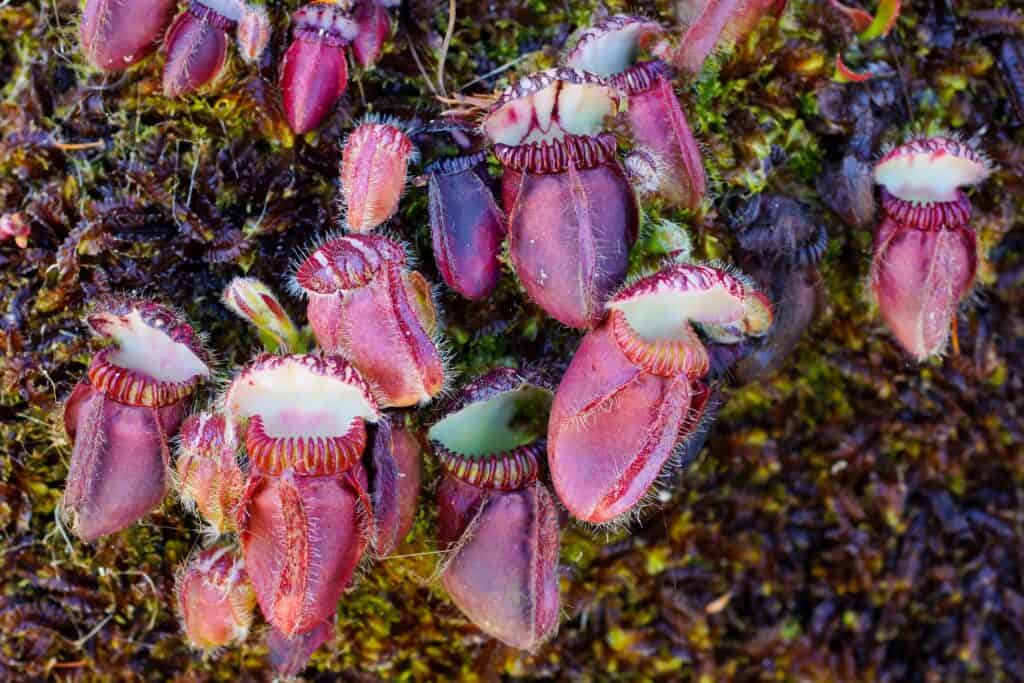
Native to southwestern Australia, the Albany Pitcher Plant is a small but fascinating carnivorous plant. It produces specialized leaves that form pitcher-shaped traps, luring in insects with sweet nectar. Once inside, the insects become trapped in a pool of digestive enzymes, where they are broken down to provide the plant with essential nutrients. This species is endangered due to habitat loss and the effects of agricultural expansion, which are reducing its wetland habitats. This plant is unique because it shares characteristics with both the American and Asian pitcher plants, yet it belongs to its own distinct family. It thrives in specific environmental conditions, particularly in peaty soils and areas with seasonal water availability. The plant primarily consumes insects and small invertebrates, which supplement the nutrient-poor soil in its environment.
Cape Sundew (Drosera capensis)
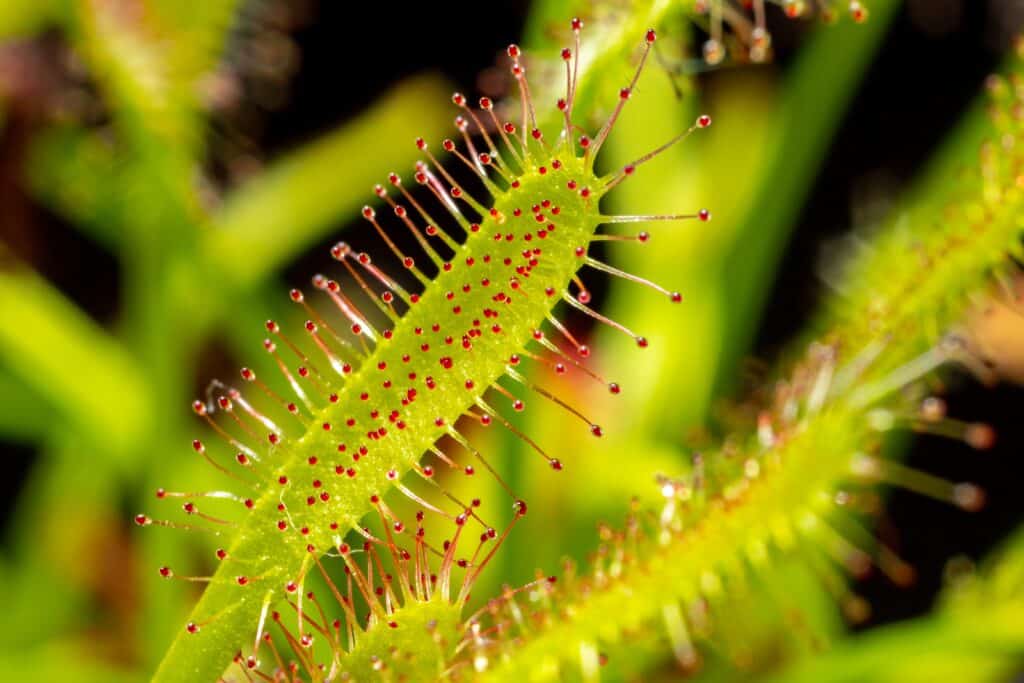
The Cape Sundew, native to South Africa, is a striking carnivorous plant known for its long, sticky tentacles that cover its leaves. These tentacles secrete a sticky mucilage that traps insects, which are then slowly digested by the plant’s enzymes. While it is not critically endangered, habitat loss due to urbanization and agriculture threatens its survival in the wild. The plant thrives in nutrient-poor soils and relies heavily on insect prey to meet its nutritional needs. Its adaptability has made it a popular species for cultivation, but wild populations continue to dwindle. Unlike some other carnivorous plants, Drosera capensis can capture multiple prey at once, maximizing its nutrient intake. The vivid red color of its tentacles adds to its allure, making it an attractive plant for collectors. In the wild, it consumes small insects like flies and ants, which are essential to its survival. Conservation efforts are focused on preserving its natural habitat in South Africa.
Darlingtonia Californica (Darlingtonia californica)
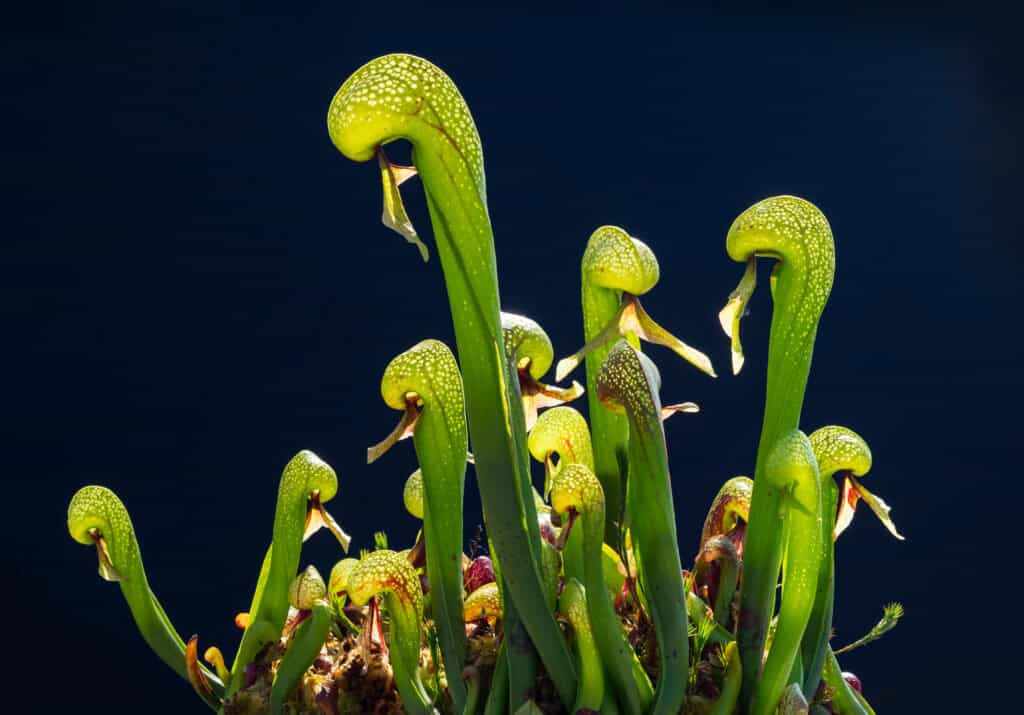
Known as the California pitcher plant or cobra lily, Darlingtonia californica is a rare carnivorous plant found in nutrient-poor bogs and fens in Northern California and Oregon. The plant gets its name from its hooded leaves, which resemble the head of a striking cobra. It uses these leaves to trap insects, which fall into a pool of digestive enzymes at the base. It is endangered because its wetland habitats are increasingly being drained or destroyed due to development and agriculture. In addition to insects, Darlingtonia californica is known for being one of the few pitcher plants that possess a unique method of enzyme production, which allows it to digest a variety of prey. Its rarity in the wild makes it a highly sought-after plant by collectors, adding to the pressures on its survival. Its diet consists primarily of small insects and arachnids, which supplement the plant’s nutritional intake. Despite its beauty, its fragile habitat makes it highly vulnerable to environmental changes.
King Sundew (Drosera regia)
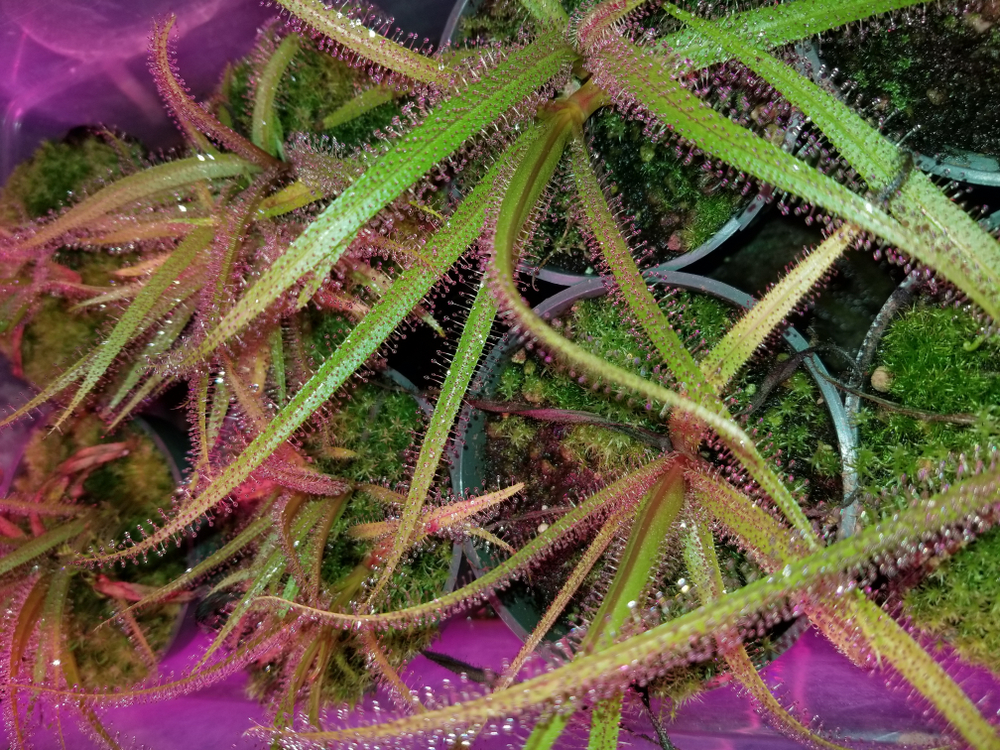
The King Sundew, native to South Africa, is one of the largest species of sundews, with long, tentacle-covered leaves that reach up to 60 cm in length. These tentacles secrete a sticky substance that traps insects, which are then digested by the plant. It is considered endangered due to habitat loss, as well as climate change, which is altering the delicate ecosystems where it thrives. Drosera regia prefers nutrient-poor, acidic soils and relies heavily on insect prey for its nutrients. Its large size and impressive tentacle structure make it stand out among other sundew species. The plant is particularly susceptible to changes in water levels, making it vulnerable to droughts and other environmental shifts. Its primary prey consists of flying insects, but it can capture anything that touches its sticky leaves.
Yellow Trumpet Pitcher Plant (Sarracenia flava)
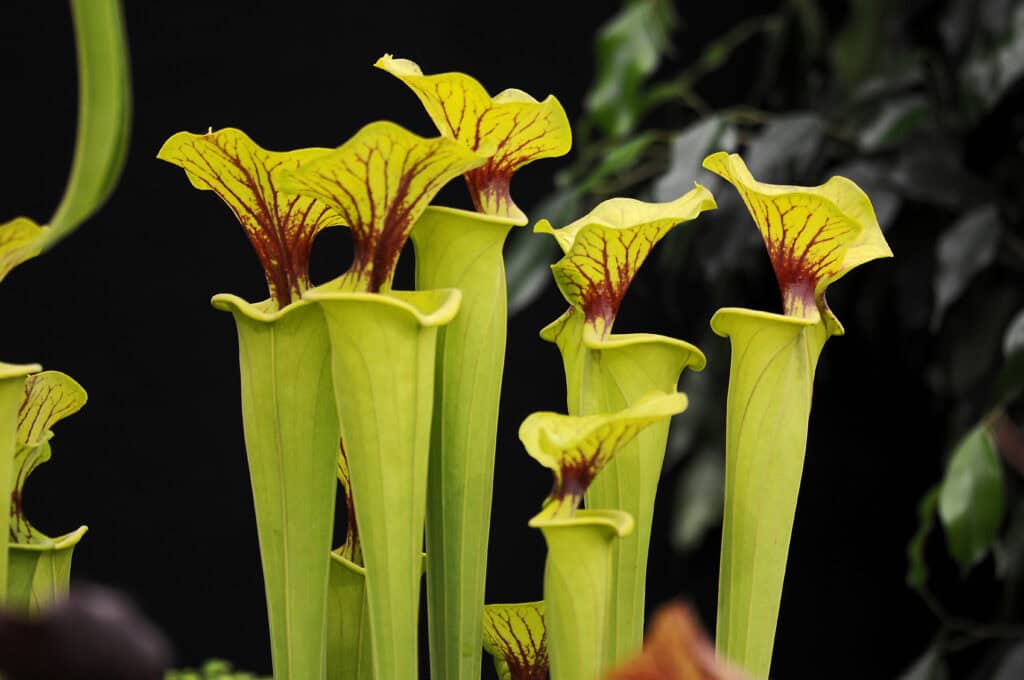
The Yellow Trumpet Pitcher Plant is a carnivorous species native to the southeastern United States. Its tall, tubular leaves form a pitcher shape, which traps insects that fall into the digestive fluid at the bottom. The bright yellow color of the leaves and the sweet nectar they produce attract insects, making them highly efficient at capturing prey. Habitat destruction due to urbanization and agriculture is the primary threat to this species, as wetlands are drained for development. The plant thrives in boggy areas with poor soil, relying on insects for additional nutrients. Sarracenia flava is one of the larger pitcher plants, reaching heights of up to 1 meter. It is also threatened by poaching, as collectors seek rare specimens for their gardens. It consumes mostly flies, beetles, and ants, which provide essential nutrients.
Parrot Pitcher Plant (Sarracenia psittacina)
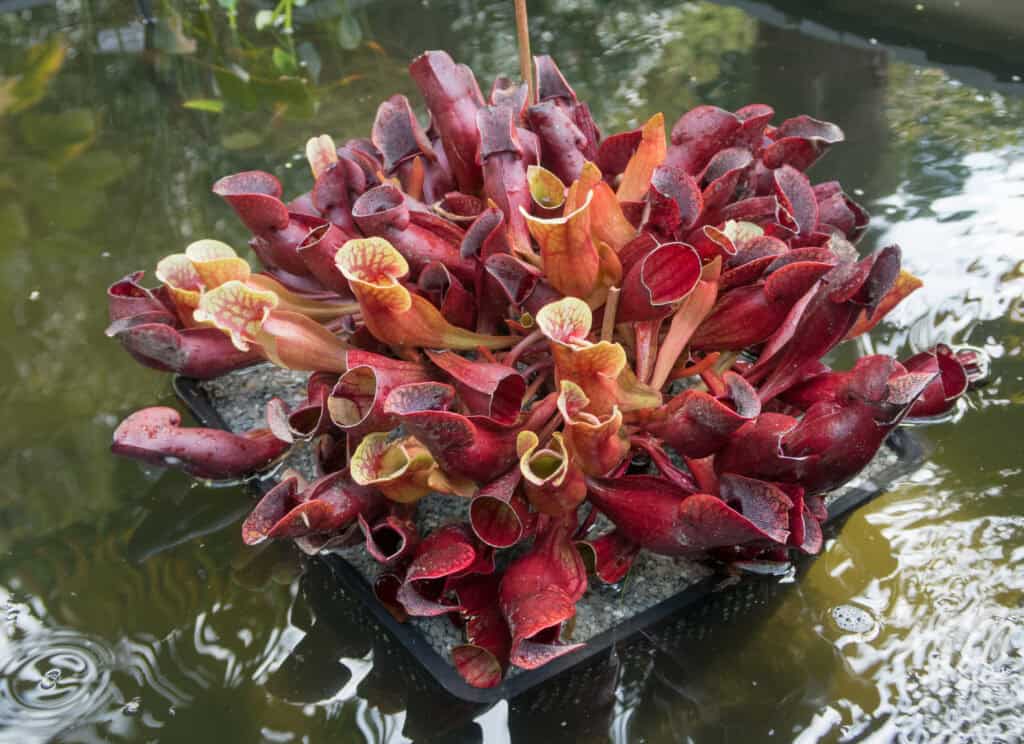
The Parrot Pitcher Plant is a rare species native to the southeastern United States, particularly the Gulf Coast region. Its pitcher-shaped leaves are shorter and wider than those of other pitcher plants, and they trap insects by luring them inside with sweet nectar. It is endangered due to habitat loss, as wetlands are drained for agriculture and development. Sarracenia psittacina thrives in boggy areas with nutrient-poor soils, relying on insects to meet its nutritional needs. Its bright red and green leaves help attract prey, which are eventually trapped and digested inside the pitcher. In addition to habitat loss, this species faces threats from collectors who seek rare carnivorous plants. Its unique shape and coloration make it a distinctive and highly sought-after species. In the wild, it feeds on small insects such as flies, beetles, and ants.
Raffles’ Pitcher Plant (Nepenthes rafflesiana)
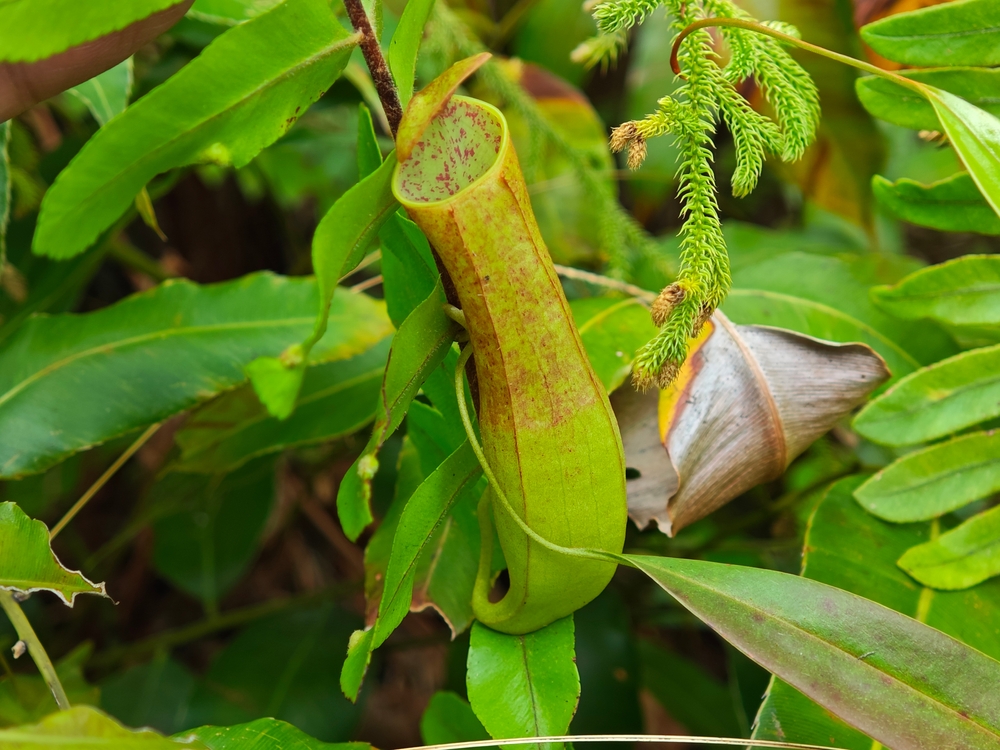
Native to Borneo and Sumatra, Nepenthes rafflesiana is a striking carnivorous plant with large pitchers that can grow up to 20 cm in length. These pitchers are designed to trap insects, which drown in the digestive fluid inside and are broken down by the plant’s enzymes. This species is endangered due to deforestation and habitat loss in its native range. Nepenthes rafflesiana thrives in lowland rainforests, where it grows in nutrient-poor soils and relies on insects for nutrition. The plant has developed a specialized method of attracting prey, using both visual and chemical cues to lure insects into its trap. In addition to its large size, it is known for its beautiful, mottled coloration, which makes it a popular plant among collectors. It primarily consumes ants, beetles, and other small insects.
Violet Butterwort (Pinguicula moranensis)
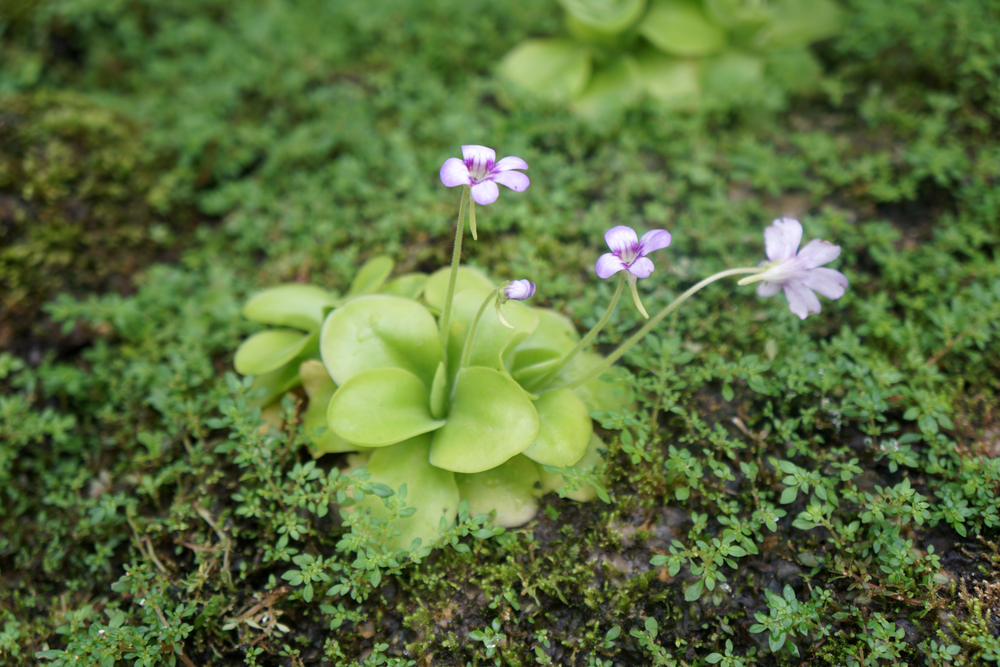
The Violet Butterwort is a carnivorous plant native to Mexico and Central America. Its delicate, violet-colored flowers and sticky leaves make it a unique species among carnivorous plants. It uses its sticky leaves to trap small insects, which are then digested by the plant’s enzymes. Pinguicula moranensis is considered endangered due to habitat destruction and the effects of agriculture and urbanization in its native range. It thrives in moist, rocky environments with nutrient-poor soils, relying on insects to meet its nutritional needs. Its bright flowers help attract pollinators, while its sticky leaves capture prey. The Violet Butterwort is also popular among plant collectors, adding pressure to wild populations. It primarily feeds on small insects such as flies and gnats, which are essential for its survival.
Tropical Pitcher Plant (Nepenthes villosa)
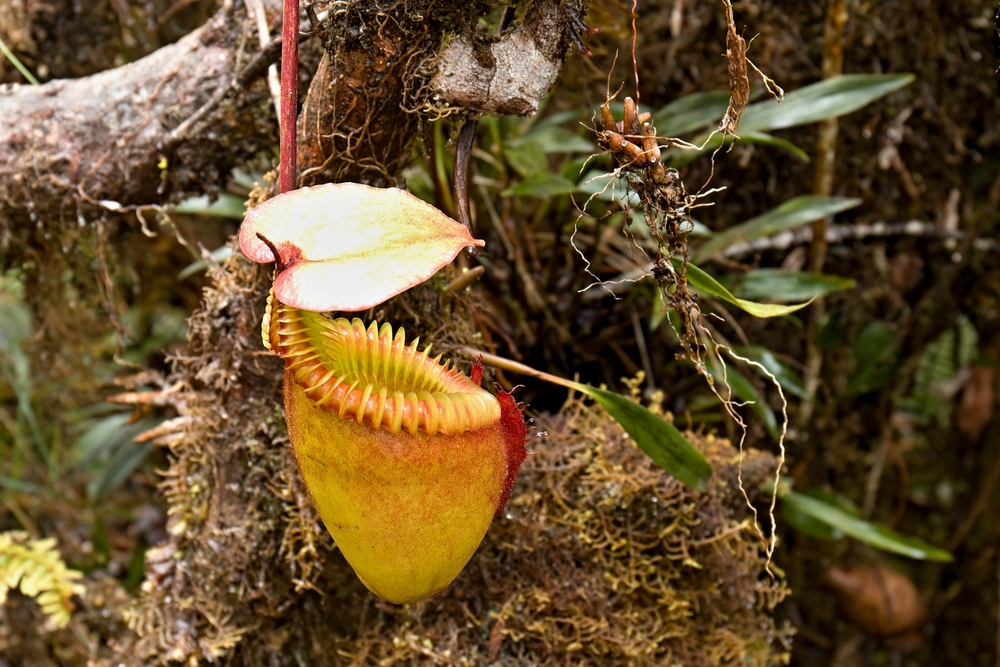
The Tropical Pitcher Plant is a carnivorous species native to the highlands of Borneo. Its large, brightly colored pitchers can reach up to 30 cm in length and are designed to trap insects and small animals. Nepenthes villosa is endangered due to deforestation and habitat loss, as well as the effects of climate change, which are altering its mountainous environment. The plant thrives in nutrient-poor soils and relies heavily on insect prey to meet its nutritional needs. Its bright coloration and sweet nectar help attract prey, which are eventually trapped and digested by the plant. In addition to insects, it is capable of capturing small vertebrates such as frogs and rodents. The plant is highly prized by collectors, adding to the pressures on its wild populations.
Mexican Butterwort (Pinguicula gigantea)
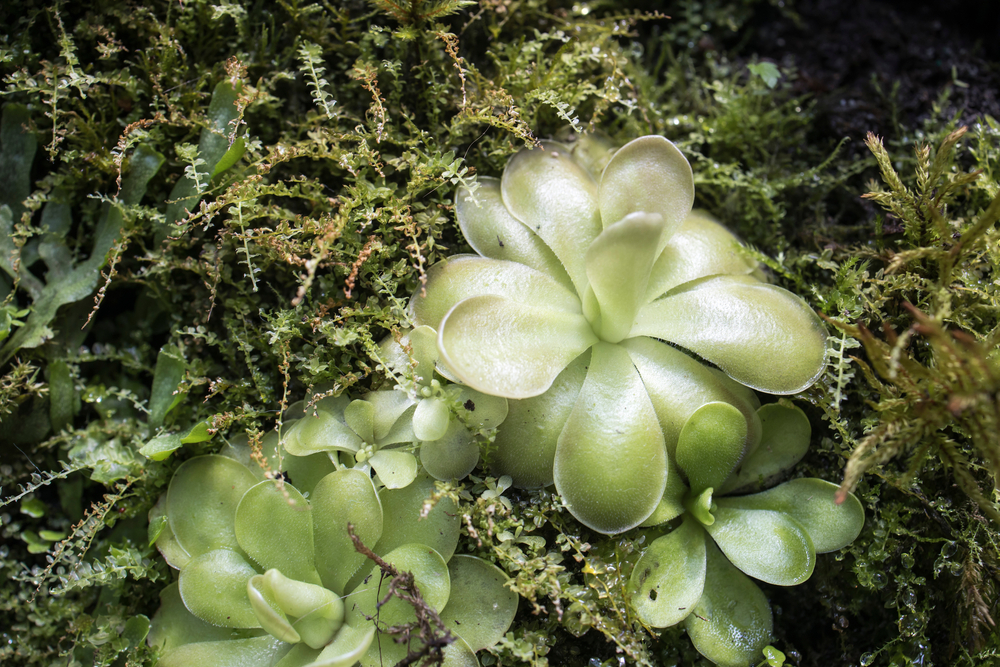
Native to Mexico, the Mexican Butterwort is a carnivorous plant known for its sticky, glandular leaves that trap small insects. Once trapped, the insects are digested by the plant’s enzymes to provide essential nutrients. Pinguicula gigantea is endangered due to habitat destruction caused by agriculture and urbanization in its native range. The plant thrives in rocky, nutrient-poor soils, where it relies on insects to meet its nutritional needs. Its bright, violet flowers help attract pollinators, while its sticky leaves capture prey. It is also known for its ability to survive in drier environments compared to other butterworts.
Mountain Sundew (Drosera arcturi)
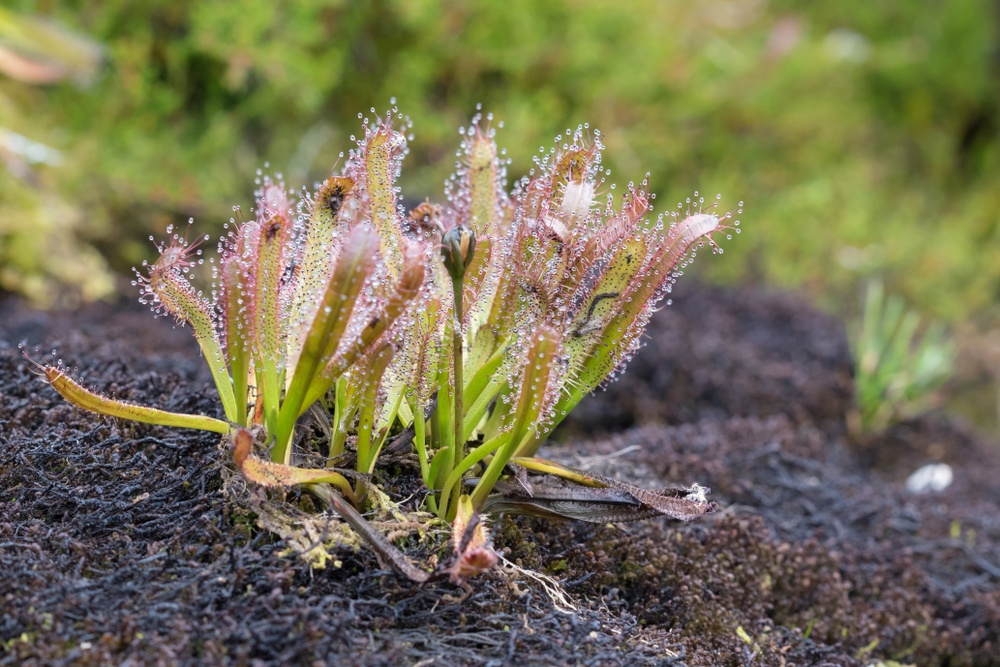
The Mountain Sundew is a rare carnivorous plant native to the alpine regions of Australia and New Zealand. Its leaves are covered in sticky tentacles that trap insects, which are then digested by the plant’s enzymes. Drosera arcturi is endangered due to habitat destruction and the effects of climate change, which are altering its alpine environment. It thrives in nutrient-poor soils and relies heavily on insect prey to meet its nutritional needs. Its small size and specialized habitat make it particularly vulnerable to environmental changes. The plant is unique among sundews because it can survive in colder temperatures, making it one of the few carnivorous plants adapted to alpine conditions. It is also threatened by collectors, who seek out rare alpine species. In the wild, it primarily consumes small insects, which provide essential nutrients.
Portuguese Sundew (Drosophyllum lusitanicum)
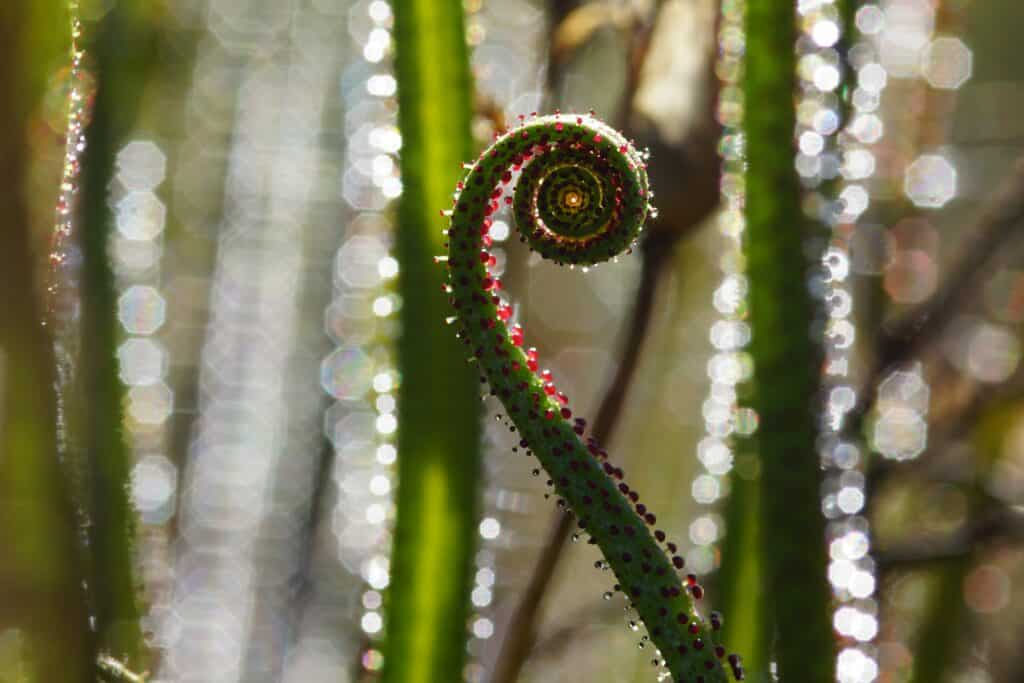
The Portuguese Sundew is a rare carnivorous plant native to the Iberian Peninsula. Unlike most sundews, which prefer wet environments, Drosophyllum lusitanicum thrives in dry, sandy soils. Its long, slender leaves are covered in sticky glands that trap insects, which are then digested by the plant’s enzymes. The plant is endangered due to habitat destruction caused by agriculture and development. It relies heavily on insect prey to meet its nutritional needs, as the soils in which it grows are extremely nutrient-poor. It is unique because it can tolerate dry conditions that would be unsuitable for most other carnivorous plants. It is also highly sought after by collectors, adding pressure to wild populations. It consumes small insects such as flies and beetles, which are essential for its survival.
Heliamphora (Heliamphora chimantensis)
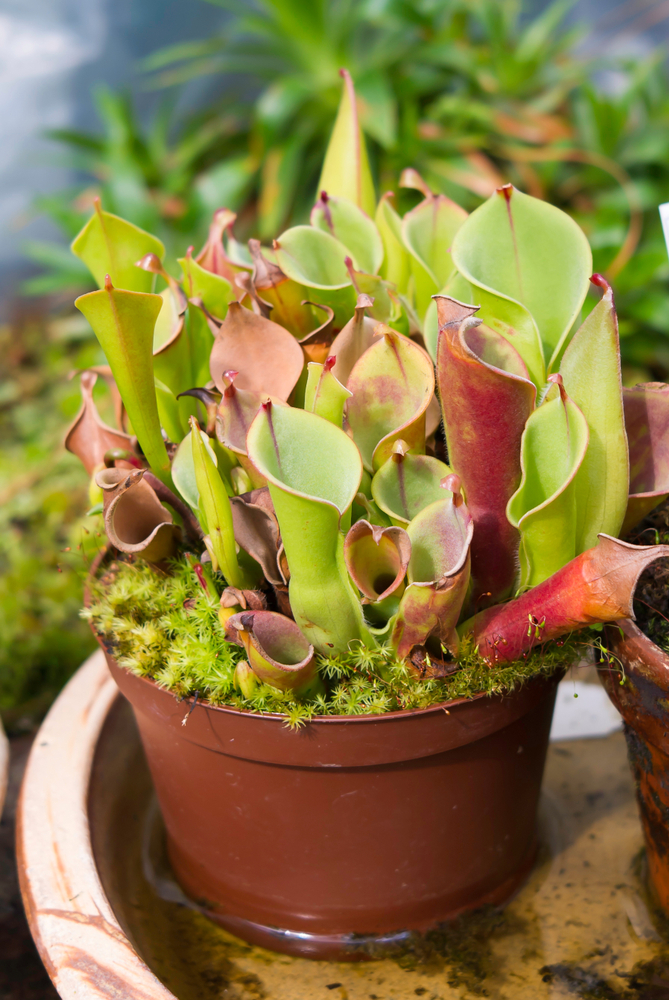
Heliamphora chimantensis is a rare carnivorous plant found on the tepuis (tabletop mountains) of Venezuela. Its tall, tubular pitchers are designed to trap insects, which are then digested by the plant’s enzymes. The plant is endangered due to habitat destruction and the effects of climate change, which are altering its high-altitude environment. It thrives in nutrient-poor soils and relies heavily on insect prey to meet its nutritional needs. Its unique pitcher shape and ability to grow in high-altitude conditions make it a fascinating species for study. The plant is also threatened by collectors, who seek out rare high-altitude species. It primarily consumes small insects such as flies and beetles.
This article originally appeared on Rarest.org.
More from Rarest.org
19 Hidden Libraries Filled With Rare Manuscripts and Artifacts

Hidden libraries hold some of the world’s most valuable manuscripts and artifacts. These collections, often tucked away, safeguard centuries of knowledge. Many are not easily accessible, making them even more intriguing to scholars. Read More.
9 Enigmatic Deep-Sea Creatures That Glow in the Dark
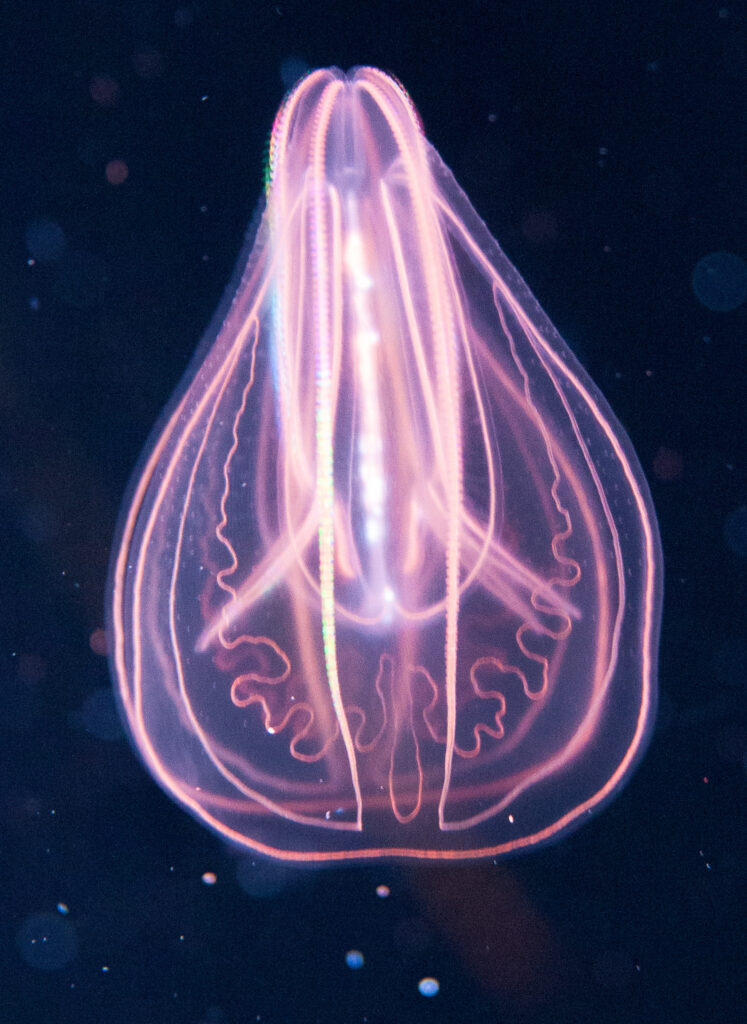
The deep sea holds some of the most fascinating creatures on Earth, many of which have developed the ability to glow in the dark. These bioluminescent animals use their light-producing capabilities for a variety of reasons, including attracting prey, camouflage, or communication. Read More.
14 Iconic Road Trips That Take You Through Stunning Countryside
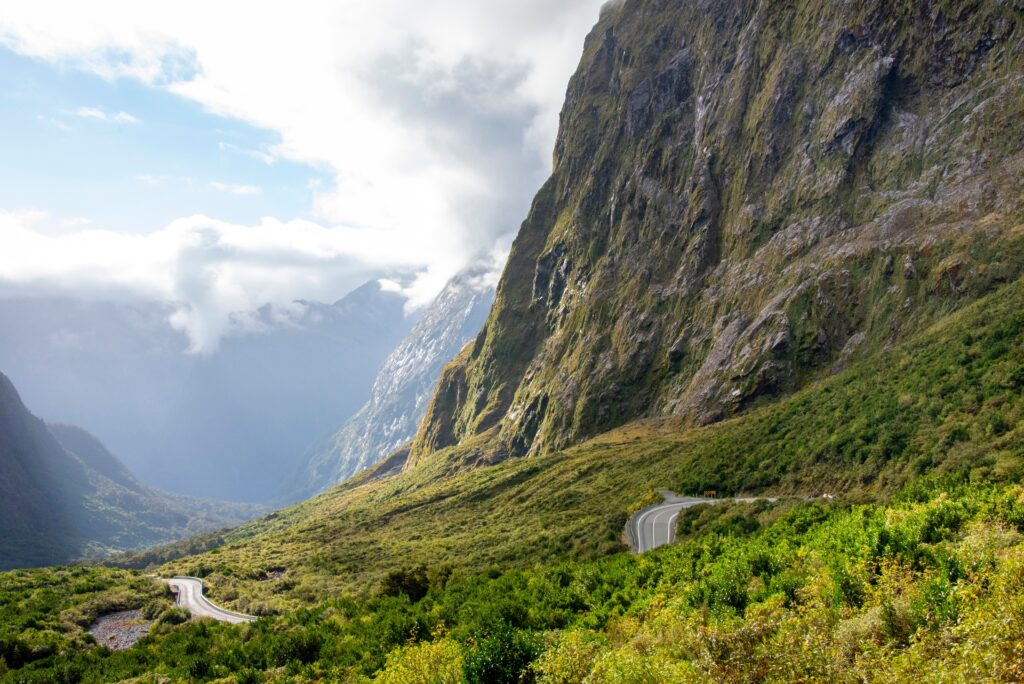
Exploring the countryside by car offers an unmatched sense of freedom and discovery. Some routes take you through dramatic coastlines, while others wind through lush landscapes and historic villages. Read More.
